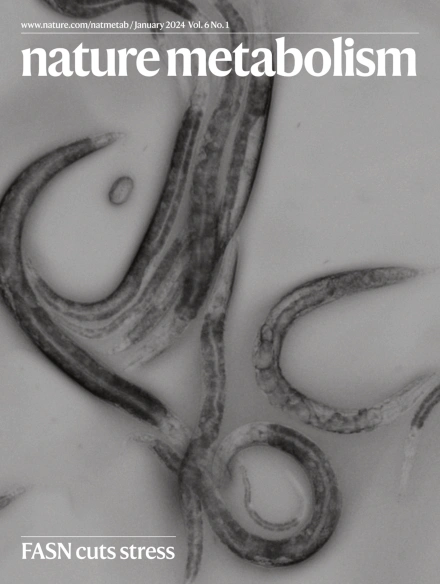Tumour-associated macrophages serve as an acetate reservoir to drive hepatocellular carcinoma metastasis.
IF 20.8
1区 医学
Q1 ENDOCRINOLOGY & METABOLISM
引用次数: 0
Abstract
Increased acetyl-coenzyme A (acetyl-CoA) generation facilitates cancer metastasis and represents a critical metabolic characteristic of metastatic cancers. To maintain high acetyl-CoA levels, cancer cells often enhance the uptake of acetate for acetyl-CoA biosynthesis. However, the microenvironmental source of acetate remains largely unknown. Here we demonstrate that acetate is secreted by tumour-associated macrophages (TAMs) and taken up by hepatocellular carcinoma (HCC) cells to support acetate accumulation. Mechanistically, HCC cell-derived lactate activates the lipid peroxidation-aldehyde dehydrogenase 2 (ALDH2) pathway in TAMs, which promotes the TAMs' acetate production and secretion. Inhibition of ALDH2 or of lipid peroxidation in TAMs abrogates acetate-induced migration of HCC cells in vitro. In an orthotopic HCC model involving male mice, genetic ablation of ALDH2 in TAMs reduces HCC cell acetate levels and HCC lung metastases. Collectively, our findings reveal a metabolic interaction between HCC cells and TAMs-involving lactate, lipid peroxidation and acetate-and position TAMs as an acetate reservoir that drives HCC metastasis.肿瘤相关巨噬细胞作为醋酸盐储存库驱动肝细胞癌转移。
乙酰辅酶A (acetyl-CoA)的增加促进了癌症的转移,是转移性癌症的一个关键代谢特征。为了维持较高的乙酰辅酶a水平,癌细胞通常会增加醋酸盐的摄取以进行乙酰辅酶a的生物合成。然而,醋酸盐的微环境来源在很大程度上仍然未知。在这里,我们证明了醋酸盐是由肿瘤相关巨噬细胞(tam)分泌的,并被肝细胞癌(HCC)细胞吸收以支持醋酸盐的积累。机制上,HCC细胞源性乳酸激活tam中的脂质过氧化-醛脱氢酶2 (ALDH2)通路,促进tam的醋酸生成和分泌。在体外实验中,在tam中抑制ALDH2或脂质过氧化可消除醋酸盐诱导的HCC细胞迁移。在雄性小鼠原位肝癌模型中,基因消融TAMs中的ALDH2可降低HCC细胞醋酸水平和HCC肺转移。总的来说,我们的研究结果揭示了HCC细胞与tam之间的代谢相互作用-涉及乳酸,脂质过氧化和醋酸盐-并将tam定位为驱动HCC转移的醋酸盐库。
本文章由计算机程序翻译,如有差异,请以英文原文为准。
求助全文
约1分钟内获得全文
求助全文
来源期刊

Nature metabolism
ENDOCRINOLOGY & METABOLISM-
CiteScore
27.50
自引率
2.40%
发文量
170
期刊介绍:
Nature Metabolism is a peer-reviewed scientific journal that covers a broad range of topics in metabolism research. It aims to advance the understanding of metabolic and homeostatic processes at a cellular and physiological level. The journal publishes research from various fields, including fundamental cell biology, basic biomedical and translational research, and integrative physiology. It focuses on how cellular metabolism affects cellular function, the physiology and homeostasis of organs and tissues, and the regulation of organismal energy homeostasis. It also investigates the molecular pathophysiology of metabolic diseases such as diabetes and obesity, as well as their treatment. Nature Metabolism follows the standards of other Nature-branded journals, with a dedicated team of professional editors, rigorous peer-review process, high standards of copy-editing and production, swift publication, and editorial independence. The journal has a high impact factor, has a certain influence in the international area, and is deeply concerned and cited by the majority of scholars.
 求助内容:
求助内容: 应助结果提醒方式:
应助结果提醒方式:


